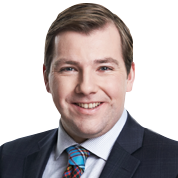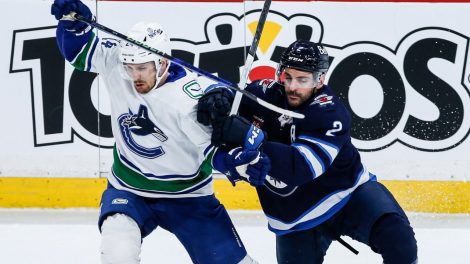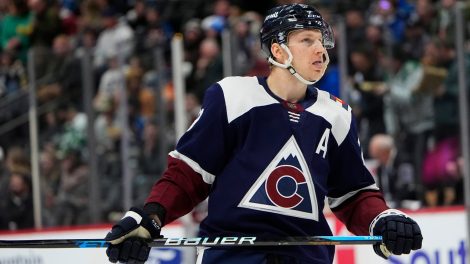From out of the uncertain fog that has hung over the NHL for the last 11 weeks you could finally make out some light.
In detailing how his league intends to emerge from the COVID-19 pause to crown a Stanley Cup champion, commissioner Gary Bettman offered a glimmer of hope to anyone invested in seeing that happen. It’s not something his North American-based counterparts have yet been able to do and there was a decidedly optimistic tone to the NHL’s message despite it being delivered without ironclad guarantees, promises or even timelines.
“We hope that this is a step back toward normalcy,” Bettman said Tuesday.
Should it be deemed safe to do so, the new normal will see 24 teams brought back to two hub cities featuring tightly controlled protective bubbles built around team staff and players. It will include nightly tests before bed so that any positive results will be discovered prior to the individual leaving his hotel room the following morning — one of many planned safeguards to prevent an outbreak that might derail the whole tournament.
There’s an unmistakable determination to navigate any issues that arise here, which is an encouraging sign in itself with so many remaining.
Players signed off on the framework for the resumption-of-play format last Friday, but there are details still to be worked out with the league. Whether a bracket or seeding will be used following the play-in portion, and whether the first two playoff rounds are contested as best-of-fives or best-of-sevens, are among the items still carrying a “TBD.”
The same goes for where these games will be played, although the NHL has narrowed its focus to 10 potential locations that include Edmonton, Vancouver and Toronto. None of those Canadian cities will be picked if the government doesn’t lift a mandatory 14-day quarantine for anyone entering the country, according to deputy commissioner Bill Daly, and the dialogue on that issue is ongoing.
Las Vegas is considered a favourite to be selected as one hub while Chicago, Columbus, Dallas, Los Angeles, Minneapolis/St. Paul and Pittsburgh are also under consideration.
Bettman intends to use all of the time at his disposal — be it waiting another three weeks to ensure he has up-to-date information before finalizing the hub locations, or wisely refusing to set firm deadlines.
Instead, he’s traced an outline around how the return-to-play might go. The league hopes to open team facilities for voluntary small-group workouts next week and won’t progress to mandatory training camps before July 1. The players will be given the final say on how much time they need to get back into playing shape, according to the commissioner, but there’s a conceivable scenario where games resume roughly two months from now.
“I think realistically if we’re in training camp mid-July, that would be a good thing, and if we can be playing by the end of July or the beginning of August, that would be a good thing, too,” said Bettman. “But if it has to slide more, then it’ll slide. There’s a reason that we’re not giving you dates now because anybody who gives you a date is guessing, and we think we’d rather take a more holistic approach to doing this.”
Unprecedented times have resulted in unprecedented measures.
How else to explain a draft lottery that could actually include multiple phases? The first will be conducted June 26 with the top three picks up for grabs among the seven teams whose season is officially over — Ottawa holds a 25 per cent chance at landing No. 1 — plus the eight losers of play-in series that won’t have been played by then.
A placeholder will be used to represent that group and if it wins the first-, second- or third-overall pick then a second lottery is required this summer.
It’s an example of the kind of creative decision-making that will continue to be needed to complete this strangest of seasons by the end of September.
Bettman speaks like a man confident he’ll find a way. He even managed to sound undaunted by the stark economic challenges at hand — which include the millions needed for testing and “tens of millions” required to set up shop in hub cities for months on end for games that won’t generate any gate revenue.
The health and safety of players and staff will drive decisions. Teams will be limited to bringing 50 personnel into the hub, which includes expanded rosters of 28 skaters and as many goaltenders as each wish to carry.
“There aren’t going to be a lot of people on the event floor coming anywhere close to the players once we do this,” said Bettman. “I understand that everybody has a job to do, but we’ve got to keep the players safe and healthy if we’re going to be able to see this through.
“The more people that they can have contact with, the greater the risk becomes.”
Where you could really find hope Tuesday was not just in the plan already taking shape, but in the way the outstanding issues were framed.
The NHL seems to be taking a clear-eyed approach to a monumental task. It’s shown a real willingness to take cues from the players during this pause and still has work to do to make them comfortable with the hub city setups, among many other issues.
Yet even with the long road ahead, they see a reward off in the distance.
“I look forward to the greatest privilege of all,” said Bettman. “Presenting the most storied and coveted trophy in all of sports to the captain of the 2019-20 Stanley Cup champions.”
[relatedlinks]









